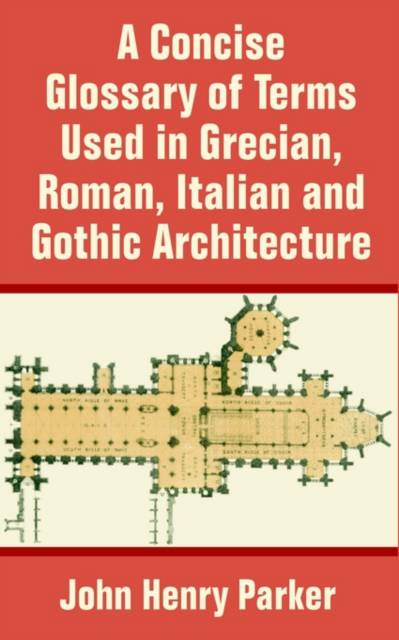
Je cadeautjes zeker op tijd in huis hebben voor de feestdagen? Kom langs in onze winkels en vind het perfecte geschenk!
- Afhalen na 1 uur in een winkel met voorraad
- Gratis thuislevering in België vanaf € 30
- Ruim aanbod met 7 miljoen producten
Je cadeautjes zeker op tijd in huis hebben voor de feestdagen? Kom langs in onze winkels en vind het perfecte geschenk!
- Afhalen na 1 uur in een winkel met voorraad
- Gratis thuislevering in België vanaf € 30
- Ruim aanbod met 7 miljoen producten
Zoeken
A Concise Glossary of Terms Used in Grecian, Roman, Italian, and Gothic Architecture
John Henry Parker
Paperback | Engels
€ 46,95
+ 93 punten
Omschrijving
Reprinted from the 9th edition of 1896, the reference is extensively illustrated with examples, packed with names, definitions and descriptions. Parker's most popular, if not his most profound, work. It includes fresh ideas on Saxon architecture, an article on stained glass by Willement, and (like most of Parker's writings) is charmingly - and accurately - illustrated by Jewitt. John Henry Parker was born in London in 1806. An English scholar, he was interested in the history of architecture and in restoration. After a period spent in Rome, Parker entered the field of classical archaeology. In 1868 he founded the British and American Archaeological Society of Rome. In 1870 he was elected director of the Ashmolean Museum in Oxford. He died there in 1884.
Specificaties
Betrokkenen
- Auteur(s):
- Uitgeverij:
Inhoud
- Aantal bladzijden:
- 344
- Taal:
- Engels
Eigenschappen
- Productcode (EAN):
- 9781410204011
- Verschijningsdatum:
- 30/12/2002
- Uitvoering:
- Paperback
- Formaat:
- Trade paperback (VS)
- Afmetingen:
- 127 mm x 203 mm
- Gewicht:
- 308 g

Alleen bij Standaard Boekhandel
+ 93 punten op je klantenkaart van Standaard Boekhandel
Beoordelingen
We publiceren alleen reviews die voldoen aan de voorwaarden voor reviews. Bekijk onze voorwaarden voor reviews.









